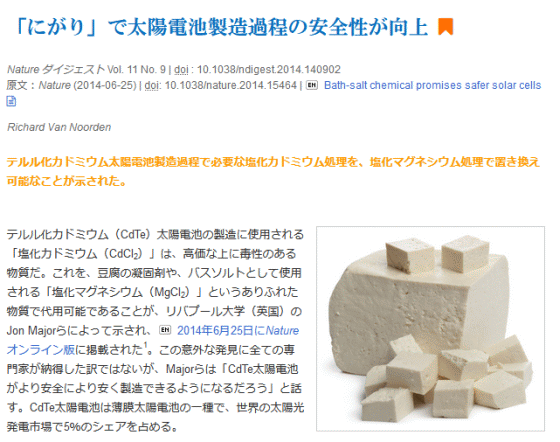It turns out that the pungent ingredient 'capsaicin' of pepper is useful for improving the performance of solar cells

It was discovered that '
Direct Observation on p- to n-Type Transformation of Perovskite Surface Region during Defect Passivation Driving High Photovoltaic Efficiency: Joule
https://www.cell.com/joule/fulltext/S2542-4351 (20) 30608-5
Solar panels capture more sunlight with capsaicin --the chemical that makes chili peppers spicy
https://theconversation.com/solar-panels-capture-more-sunlight-with-capsaicin-the-chemical-that-makes-chili-peppers-spicy-152901
A joint research team from China and Sweden has improved the efficiency of conversion from light energy to electricity from 19.1% to 21.88% by sprinkling capsaicin on the precursor of the perovskite structure during the manufacturing process of perovskite solar cells , which is the highest in the world. We have succeeded in developing a perovskite solar cell with high power conversion efficiency. Furthermore, the perovskite solar cell using capsaicin maintained a conversion efficiency of 90% or more of the initial conversion efficiency even after being stored at room temperature for 800 hours.
One of the causes of lowering the power conversion efficiency of perovskite solar cells is the problem that the perovskite structure collapses during manufacturing. However, when capsaicin is added, the collapse of the perovskite membrane is suppressed and a large amount of electric charge can be transported, so the power conversion efficiency is improved.

Based on his own experience, Mr. Major said, 'People will want to know the process that led researchers to think about using the components of pepper to help manufacture solar cells. I do the same. I've done a lot of research and it made me wonder, 'he explains, explaining how the research and development of solar cells and food were linked.
In 2014, Major discovered that safe
'Nigari' improves the safety of the solar cell manufacturing process | Nature Digest | Nature Research

However, at that time, Mr. Major did not know that magnesium chloride was used as a material for tofu, and after repeated trial and error and repeated experiments using various chemical substances, he discovered that magnesium chloride was useful. He says it's just that.
A solar cell is composed of a number of layers stacked on top of each other, and if a change is made to 'Layer A', it is necessary to make changes to other layers such as 'Layer B' and 'Layer C'. It is difficult to predict the results that will be produced. As a result, research and development on solar cells is a steady process, says Major.

As a result of repeated trial and error in this discovery, the effect of 'C18H27NO3 (capsaicin)' was recognized, and it happened that capsaicin was the pungent ingredient of pepper, and researchers said, 'Let's use capsaicin! I didn't inspire him.
Finally, Mr. Major said, 'If I read the article' Nutmeg improved the performance of solar cells 'in the near future,' Is it the result of using nutmeg that has expired for various purposes? '' Because it was boring, nutmeg Don't think, 'Did you try using it?', But think of it as the result of repeated trial and error based on the information accumulated in the research of solar cells. '
Related Posts:
in Science, Posted by log1o_hf







